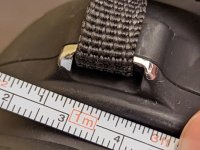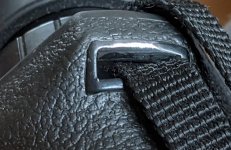abirdingguy
Well-known member
Several months ago, I bought a scarcely used 10x42 L IS. I've been very happy with the views, especially with the image stabilizer engaged.
However I'm having a minor problem and wondering if anyone has any advice or experienced a similar issue: Parts of the "rubber" coating (not sure what the material actually is) is wearing off leaving exposed metal. This is occurring at several different places around the unit. It is most pronounced around where I have attached "cloth" straps (again not sure of the actual material) through the connection loops. However similar wear also appears elsewhere.
My biggest concern is that the metal body will degrade over time when exposed to the atmosphere and the elements. Is this a signficant concern? Are there any best practices to ameliorate this? Has anyone else experienced this?
However I'm having a minor problem and wondering if anyone has any advice or experienced a similar issue: Parts of the "rubber" coating (not sure what the material actually is) is wearing off leaving exposed metal. This is occurring at several different places around the unit. It is most pronounced around where I have attached "cloth" straps (again not sure of the actual material) through the connection loops. However similar wear also appears elsewhere.
My biggest concern is that the metal body will degrade over time when exposed to the atmosphere and the elements. Is this a signficant concern? Are there any best practices to ameliorate this? Has anyone else experienced this?







